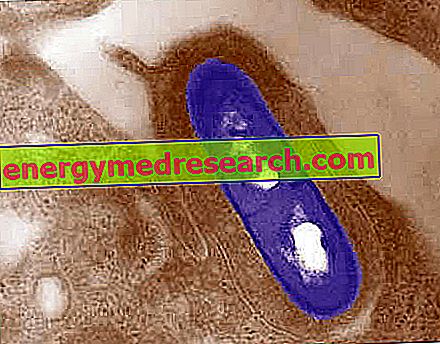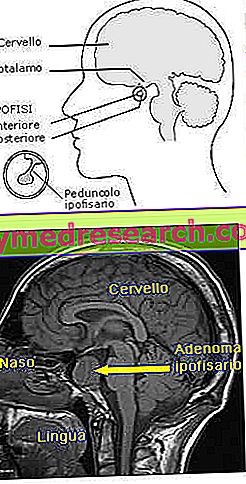Depilation involves removing hair that grows on the skin.
It may have an aesthetic or hygienic meaning (trichotomy if used as a pre-operative device).

There are various hair removal techniques. The term depilation refers mainly to cutting (cutting of the "stem" on the surface of the epidermis).
On the contrary, with the noun epilation the eradication systems, pulsed light, lasers etc (uprooting - burning of the whole hair, including the "root", up to the hypodermis) are indicated.
Among the side effects of hair removal are: abrasions, redness, cuts, sensitivity to sunlight and folliculitis.
Folliculitis is an infection of the hair follicle (epidermal structure consisting of hair and sheaths).
It occurs with pimples (which can evolve into pustules) which are more or less large, which are formed in correspondence with the removed hair.
In addition to being highly unsightly, folliculitis creates a skin discomfort typified by inflammation, itching and pus leakage.
What to do
The measures to be followed to reduce depilatory folliculitis are:
- In case of very oily skin, optimize skin cleansing.
- Take care of hygiene before removing hair, cleaning and disinfecting the skin. In fact, the infectious cause of folliculitis is the proliferation of:
- Bacteria: for example Staphylococcus aureus and Pseudomonas aeruginosa .
- Mushrooms: for example Candida albicans, fungi of the genus Malassezia and Trichophyton rubrum .
- Virus: for example Herpes simplex .
- ALWAYS use new and sterile tools, especially: razor blades, pliers, gauzes etc.
- Limit sweating and wait at least 1-2 days before starting sports activities and exposure to intense heat.
- Dress with loose-fitting clothing.
- Prevent, reduce acute and, if possible, cure any dermatosis.
- Ensure the functioning of the immune system.
- Prevent, reduce or treat type 2 diabetes.
- Prevent, reduce or cure obesity.
- Statistics suggest that anemic people are more exposed to risk, which is why it is advisable to prevent or compensate for anemia.
- Choose the most suitable hair removal / epilation technique.
- Treat hygiene after removing hair by washing the skin with mild neutral soap.
WARNING! Many cases of folliculitis are caused by causes on which it is not possible to intervene or which are unknown. In this case it is advisable to carefully apply ALL the tips we have mentioned, in the hope of achieving an optimal result.
- In case of superficial folliculitis use an antibacterial soap.
- If the folliculitis is severe and does not resolve spontaneously, it may be advisable to apply products capable of preventing the risk or reducing the severity (topical anti-inflammatory drugs). They do not require a prescription and can be recommended directly by the pharmacist.
- Most of the time this surgery is sufficient to resolve hair removal folliculitis, but if it is not, it becomes necessary to seek medical attention. He can:
- To prescribe a topical drug of antibiotic or antifungal or antiviral nature.
- Suggest a specialist dermatological examination.
What NOT to do
- Epilating / epilating areas affected by infections.
- Epilate / epilate dirty skin without cleaning or disinfecting it.
- Use tools that are already used, not very sharp or contaminated.
- Expose yourself to intense sweating immediately after hair removal, such as:
- Play sport.
- Attend extremely hot environments.
- Dress with tight-fitting clothing (tights, jeans, stretch fabric sweaters, diving suits, etc.).
- Depilate areas affected by dermatosis.
- Neglecting dermatoses.
- Ignore the importance of immune functioning.
- Being or becoming diabetic, or neglecting the disease.
- Being or becoming obese, or neglecting the disease.
- Being or becoming anemic, or neglecting the disease.
- Choose hair removal / epilation techniques that have historically already caused folliculitis.
- Neglecting hygiene after depilation / epilation or using very aggressive soaps.
- Scratching, touching, shaving again or bursting the already existing pustules.
- In case of relevant folliculitis, do not apply anti-inflammatory products.
- In the event of medium or severe folliculitis, do not go to the general practitioner or dermatologist.
- In the case of medium or severe folliculitis, do not apply antibiotic or antifungal or antiviral products.
What to eat
As anticipated, nutritional status can affect non-infectious folliculitis. It is advisable:
- Maintain a normal weight, fight overweight and treat type 2 diabetes mellitus: obesity and diabetes are associated with high levels of bodily inflammation (hair follicles are probably also compromised). Furthermore, being overweight tends to aggravate skin fatness due to excess sebum. In the case of obesity it is therefore necessary:
- Consume an adequate amount of calories, to prevent overweight, and cure any obesity.
- Keep food fats around 25% of total calories. Without making many calculations, it is advisable to consume lean foods and season each dish with at most a teaspoon of oil.
- Keep simple sugars around 10-16% of total calories; the optimal system is to eliminate sweets and take simple carbohydrates only from fruit, vegetables, milk and derivatives.
- Spread the meals adequately: the recommended method would be: breakfast 15%, 2 secondary snacks (snacks) 5%, lunch 40% and dinner 35%.
- Choosing the right foods based on their metabolic impact: avoid products with a high glycemic index and limit the portions of foods rich in carbohydrates (to reduce the glycemic load with each meal).
- Guarantee a fiber intake of about 30g / day: it modulates intestinal absorption and plays a satiating role.
- Choose healthy and nutritionally rich foods.
- Preventing or treating anemia: it may depend on iron, vitamin B12 and folic acid deficiency:
- To guarantee the intake of iron, especially haem and ferrous (2+), it is necessary to eat:
- Muscle tissue: both of terrestrial and aquatic animals: horsemeat, bovine, swine, avian, fish, whole molluscs (also land snails), whole crustaceans etc.
- Eggs: any, especially the yolk.
- Offal and fifth quarter: mainly spleen and liver, but also marrow, diaphragm, heart, etc.
- To ensure the supply of vitamin C, citric acid and fructose, it is necessary to eat:
- Sweet and sour fruit: lemon, grapefruit, orange, mandarin, clementine, kiwi, cherries, strawberries etc.
- Vegetables and tubers: parsley, pepper, lettuce, spinach, radicchio, broccoli, tomato, potato etc.
- NB . Vitamin C or ascorbic acid is a thermolabile molecule and is degraded by cooking. This means that to ensure their intake it becomes necessary to consume many raw foods. Moreover, being involved in the absorption of low-available iron, it is important that it is taken with specific foods.
- To ensure the intake of vitamin B12 (cobalamin) it is necessary to eat:
- The same foods source of heme iron.
- To ensure the intake of folic acid it is necessary to eat: liver, vegetables (eg tomatoes), sweet fruit (orange, apple, etc.) and legumes (eg beans).
- NB . Folic acid is also a thermolabile molecule and is degraded by cooking. This means that to guarantee their contribution it is advisable to eat specific foods in a raw form.
- Remember that certain foods may contain anti-nutritional principles that reduce iron absorption. To reduce its content, you need to practice:
- Soaking.
- Fermentation (yeasts or bacteria).
- Cooking.
- NB . Since cooking inhibits the nutritional principles but limits the availability of thermolabile vitamins, it is recommended that raw and cooked foods are equally present in the diet. It is advisable to reserve heat treatment especially for legumes and cereals, while most fruits and vegetables could be eaten raw.
- Strengthen or maintain the immune system: some also exert an antioxidant effect and help prevent the stress of free radicals, improving the general condition.
- Vitamin C or ascorbic acid: it is contained above all in the acidulous fruit and in the raw vegetables. In particular: peppers, lemon, orange, grapefruit, mandarancio, parsley, kiwi, lettuce, apple, chicory, cabbage, broccoli etc.
- Vitamin D or calciferol: it is contained above all in: fish, fish oil and egg yolk.
- Zinc: it is mainly contained in: liver, meat, milk and derivatives, some bivalve molluscs (especially oysters).
- Selenium: it is mainly contained in: meat, peach products, egg yolk, milk and derivatives, fortified foods (potatoes, etc.).
- Magnesium: it is mainly contained in: oilseeds, cocoa, bran, vegetables and fruits.
- Iron: it is mainly contained in: meat, peach and egg yolk.
- Polyphenolic antioxidants (simple phenols, flavonoids and tannins): they are mainly contained in: fresh fruit and vegetables, but also red wine, seeds, aromatic herbs, tea, roots, cocoa, medicinal herbs, etc.
- Lysine and glycine amino acids: they are mainly contained in: meat, fishery products, cheeses and legumes (especially soya).
- Probiotics: they are mainly found in fermented foods such as yogurt, tofu, tempeh, buttermilk etc.
- Omega 3: are mainly contained in: blue fish, some oily seeds and related oils, algae.
What NOT to Eat
- To reduce overweight and treat type 2 diabetes mellitus is important:
- Reduce total calories by 30%: this should promote 3kg weight loss per month.
- Eliminate junk foods and beverages, especially fast foods and sweet or savory snacks.
- It is also necessary to reduce the frequency of consumption and the portions of: pasta, bread, pizza, potatoes, derivatives, fatty cheeses, meat and oily fish, salami, sausages, sweets, etc.
- In adults it may be crucial to eliminate alcohol.
- To reduce anemia it is important:
- Private foods of important molecules: cooked and / or preserved vegetables, fruits, potatoes and legumes. They tend to drastically reduce the concentration of vitamin C or ascorbic acid and folic acid.
- Foods that contain too many anti-nutritional principles:
- Dietary fibers: they are essential for the health of the intestine but in a quantity of about 30g / day. In excess (especially over 40g / day) they can trigger a laxative effect, produce liquid stools and expel most of the nutrients taken with the diet; among these also iron.
- Phytic acid and phytates: they tend to chelate iron preventing intestinal absorption. They are very abundant: in the skin of legumes, in the skin of cereals (bran) and in certain oily seeds (eg in sesame).
- Oxalic acid and oxalates: like the previous ones, they tend to bind iron, hindering intestinal absorption. They are rich: the peel of cereals, spinach, rhubarb, etc.
- Tannins: also with chelating power, although they are also antioxidants, they can hinder the uptake of iron. They are present: in wine, in tea, in fruit seeds (eg grapes, pomegranate, etc.), in persimmons and unripe bananas, in cocoa, etc.
- Calcium: it is essential for the body but, at intestinal level, it competes with iron absorption. Foods rich in iron and calcium should be taken at different meals. Those that abound in calcium are mainly milk and derivatives.
- Alcoholic: ethyl alcohol is an anti-nutritional molecule and hinders the absorption of all nutrients, including iron, vitamin C, folic acid and cobalamin.
- NB . Since cooking inhibits the nutritional principles but limits the availability of thermolabile vitamins, it is recommended that raw and cooked foods are equally present in the diet. It is advisable to reserve heat treatment especially for legumes and cereals, while most fruits and vegetables could be eaten raw.
- To ensure the essential nutrients to support the immune system it is important to avoid:
- Monothematic diets.
- Vegan diet.
- Carnivorous diet.
- Diet free of vegetables and vegetables.
- Diet based exclusively on cooked and / or preserved foods.
Natural Cures and Remedies
- Phytotherapy: it is especially useful in cases of non-infectious or idiopathic folliculitis. Many products are also used in the treatment of acne (which in some ways is common to folliculitis):
- Natural cream with anti-inflammatory, capillarotropic, vasoprotective, astringent and soothing action, the basis of:
- Burdock ( Arctium lappa ).
- Horse Chestnut ( Aesculus hippocastanum ).
- Hawthorn ( Crataegus monogyna ).
- Witch hazel ( Hamamelis virgiliana ).
- Aloe ( Aloe vera ).
- Applications of clay: they have an antibacterial and detoxifying effect. They exert a greater effect if enriched with extracts of burdock, echinacea, artichoke and fumarina.
- Packs with essential oils: these solutions to be diluted in a little water counteract infections and facilitate skin detoxification. The plants in question are: thyme, oregano, lemon, sage, myrtle, geranium, bitter orange, bergamot, cedar and camphor.
- Cleansing with lemon juice or vinegar: they have a mildly antibacterial and soothing action.
- Hot water and salt packs: to be applied in the early stages of folliculitis, block bacterial action and speed up pustule maturation.
- In the case of obesity and diabetes, it is advisable to practice regular physical activity.
- In case of anemia: take food supplements containing iron, vitamin B12 and folic acid.
- In the case of an inefficient immune system, specific dietary supplements can be used. These can be based on: probiotics, amino acids, medicinal herbs, adaptogens etc.
Pharmacological care
The drugs to be used in the case of folliculitis can change considerably depending on the cause.
- Anti-inflammatory NSAIDs (paracetamol, ibuprofen, etc.): to be taken orally, they are a temporary pain-relieving and anti-inflammatory remedy, to be used in the most serious cases but only awaiting a specialist consultation.
- Cortisonic anti-inflammatories: generally topical and rarely systemic, these products have an anti-inflammatory action useful in cases of non-infectious folliculitis.
- Antibiotics (especially topical and rarely oral):
- Dicloxacillin, rifampicin and cephalosporin: active ingredients used in topical antibiotic drugs for bacterial infections due to staffilococcus aureus.
- Ciprofloxaina: antibiotic ingredient used in drugs for topical use for pseudomonas bacterial infections.
- Antifungals:
- Fluconazole and Econazole: antifungal principles. Often they are necessary because the fungal folliculitis tend to recur very frequently.
- Antivirals:
- Valaciclovir, Famciclovir or Aciclovir: antiviral principles used in drugs for topical use for viral herpetic infections.
- Immunostimulants: are drugs used when folliculitis is caused by a deficiency in immune functioning. In many of these cases, folliculitis is a secondary complication.
Prevention
- Prevent the accumulation of sebum on the skin; if excessive, reduce skin fatness.
- Do not use hair removal / hair removal techniques that have already triggered folliculitis in the past.
- Maintain a high level of skin hygiene before and after depilation / hair removal.
- Do not shave during obvious infections (especially during outbreaks of Herpes simplex).
- In the case of shaving, use new and possibly disinfected razor blades.
- Do not practice sport for 1-2 days.
- Do not expose yourself to environmental heat for 1-2 days.
- Avoid swimming pools, Turkish baths, saunas etc.
- Do not dress with tight-fitting clothes for 1-2 days and avoid technical insulating clothing such as diving suits; if necessary, make sure they are clean.
- Limit dermatoses.
- Optimize the immune system.
- Prevent and treat diabetes, obesity and anemia.
Medical Treatments
Medical treatments against folliculitis are very limited.
- Removal of any ingrown hairs and / or incision and purging of the pustules: by means of a scalpel or a needle, swollen pus sacs are broken and emptied into which sometimes a curled up hair is nested.
These are interventions that can leave noticeable scars, especially when repeated many times.
Many choose to practice these activities at home or at the beautician's, but in this case the risk of aggravation increases.



